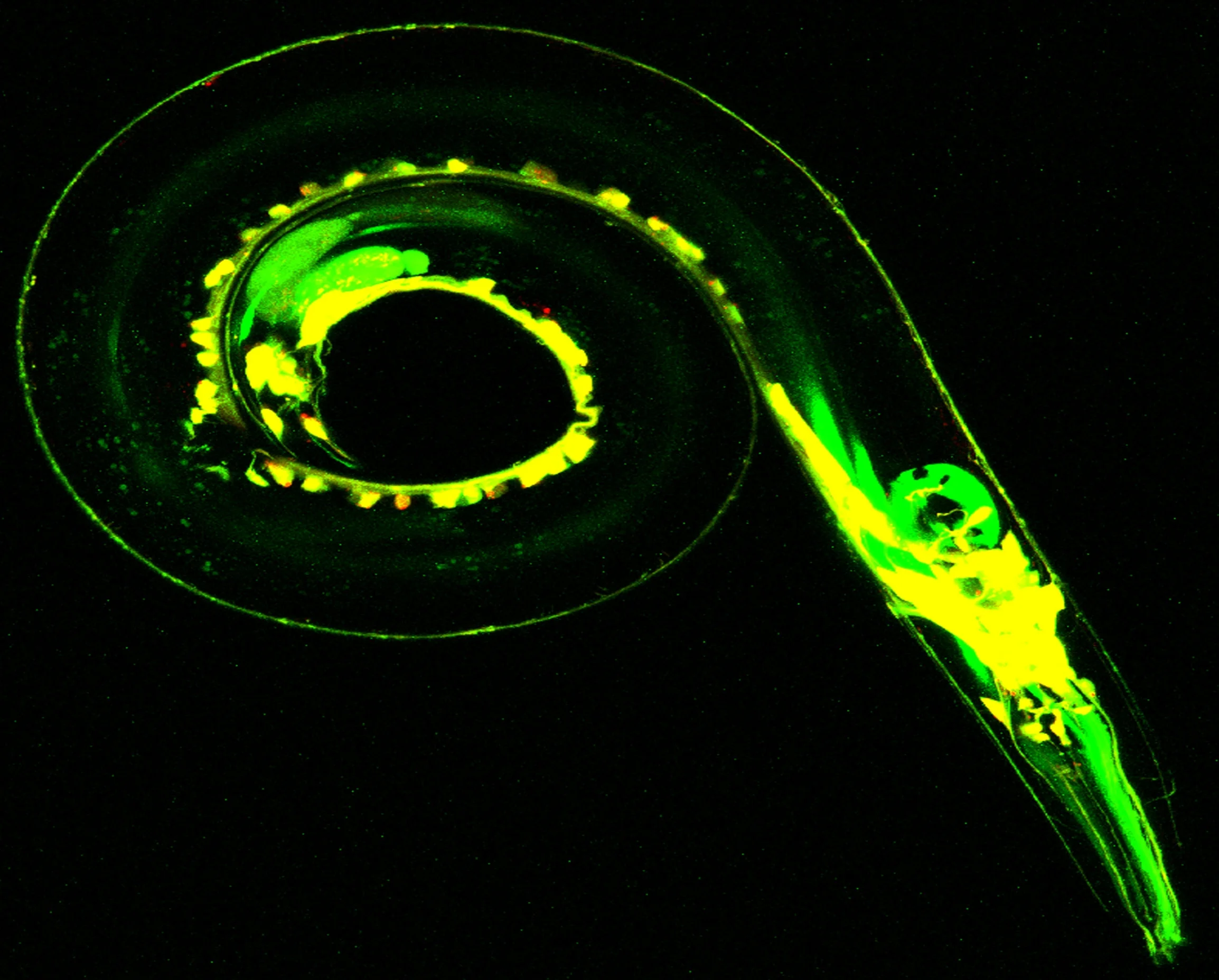How do cells communicate?
The basis of all behavior and cognition is the ability of cells to pass information between one another. Within the nervous system this is referred to as synaptic transmission. By understanding the underlying mechanisms that govern the ability of cells to communicate with one another, we can address the critical roles of different genes in proper synaptic function.
Why is this important to understand?
One of the pathologies of many neurological and muscular diseases, including Alzheimer's Disease, Parkinson's Disease, ALS, Muscular Dystrophy, and mood disorders, is a deficit or inhibition of proper synaptic transmission. By studying the different steps of transmission and elucidating the key genes and proteins involved, researchers will be able to better understand these disease states and propose targets and methods for treatment.
How can we answer these questions?
My work focuses on understanding the role of muscle acetylcholine receptors in the model organism C. elegans. C. elegans are a small soil nematode whose genome is very similar to the human genome. This means we can examine synaptic transmission in the worm and get a more intricate understanding of what may also be happening in a mammalian system. By utilizing the worms genetic tractibility, confocal imaging techniques, and in vivo electrophysiology and calcium imaging, I have been able to identify novel regulators of the nicotinic acetylcholine receptor ACR-16. Please read more about my work on the Research page.
